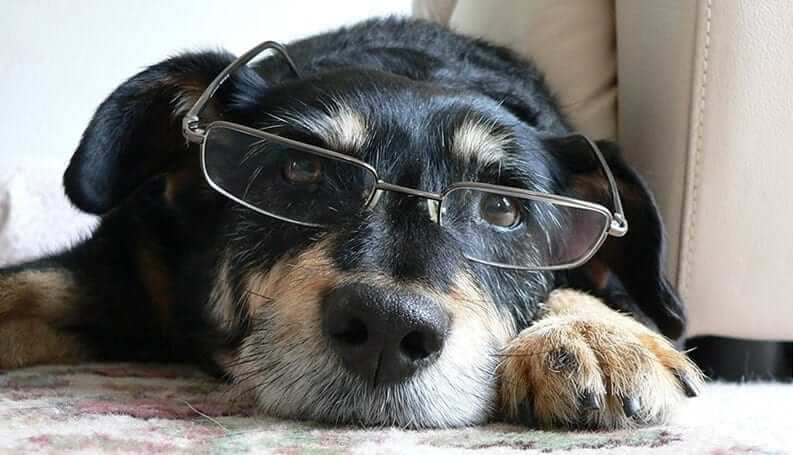Last week we discussed how diabetic pets, especially diabetic dogs, are prone to cataracts. This week we will briefly touch on some of the lesser known eye complications of pet diabetes.
Diabetic Retinopathy
The retina is the back of the eye. Diseases of the retina occur with poor diabetic control in pets and in humans, and they are probably under diagnosed in diabetic pets. Historically, 3/4 of all diabetic dogs get cataracts within a year of diabetes diagnosis, and you can’t see the retina through an opaque lens! Hence, we are likely under diagnosing retinal disease in diabetic pets. Humans are much more likely to go to an ophthalmologist than a pet is. Humans will recognize fuzzy vision and promptly get to an eye doctor! Fluffy just keeps on trucking until the vision loss is severe enough for his human to think, “I think Fluffy’s vision isn’t as good as it used to be”. Now, add in the possibility of high blood pressure in diabetic pets. Diabetic pets are more prone to hypertension than non-diabetic pets. Hypertension can result in retinal detachment and retinal hemorrhage. A detached retina could cause sudden and permanent blindness. As we discussed last week, if our pet is diabetic you should ask your vet to check your sweetie’s blood pressure.
Uveitis
If a pet has diabetic cataracts then we worry about subsequent uveitis. If proteins seep out of the lens, as may happen with cataracts, it can cause inflammation of the uvea (the pigmented area of the eye). Uveitis (inflammation of the uvea) is very painful! Most general practitioners then refer Fluffy to the local vet eye doc when we see a painful red eye. Then vet ophthalmologists use topical steroids (amongst other things) to decrease the inflammation and pain. Of course we know steroids can mess up glucose control in diabetics even if we administer them topically. Uveitis is a crummy painful scenario for a diabetic pet.
Keratopathy
The most common keratopathy (ailment of the cornea) in diabetic pets is “dry eye”. Dry eye refers to a lack of tear production, usually the watery portion of the tears. Dry eye usually presents with discharge from the eyes. If your diabetic pet frequently has goopy eyes, this may be why. Diabetic pets may not only have poor tear quantity, they may also have poor tear quality (the oily portion of the tears). Furthermore, diabetic pets may have less corneal sensitivity due to a neuropathy, so they may blink less frequently than a pet with normal corneal sensitivity. Why does all this matter? Pets with dry eye are more likely to get corneal ulcers. And if a diabetic pets does get a corneal ulcer it is harder for the pet to heal because it may also have poor tear quality and quantity! Checking for dry eye is easy. Your general practice veterinarian can check your diabetic pet for adequate tear production right in the exam room. Dry eye is more common in dogs that in cats.
The gist of this article is not to scare you. If your dog or cat has diabetes, you should pay close attention to the eyes. If you have a vet opthalmologist in your town, please consider a consultation. We general practitioners do our best, but there’s nothing like an eye doctor! I often find it easier to convince my clients to go to a vet ophthalmologist compared to referring them to other specialists as there aren’t a lot of hidden fees lurking in an ophthalmologist’s office. Many clients have a deep-rooted fear of paying a fortune at a vet specialty clinic! Even if you are on a budget, seeing a vet eye doctor is usually affordable!
If your pet is diabetic, monitor not only blood glucose but blood pressure and tear production. Keep your eye out for when Kinostat hits the market. I’ll be on the lookout as well! If my own dog had diabetes I would give alpha lipoic acid AND Ocu-GLO AND Kinostat (once it is released to market) to lessen the risk of diabetic cataracts. If you missed last week’s article you can click here to read it. And if I had a diabetic dog or cat, I’d ask my vet to check for high blood pressure which could cause retinal disease and blindness. I would strive for great glucose control in order to keep my pet visual.
Have a question? Comment below or email me at joi.suttondvm@adwdiabetes.com
NOTE: Consult your veterinarian first to make sure my recommendations fit your pets special health needs.







Leave A Comment